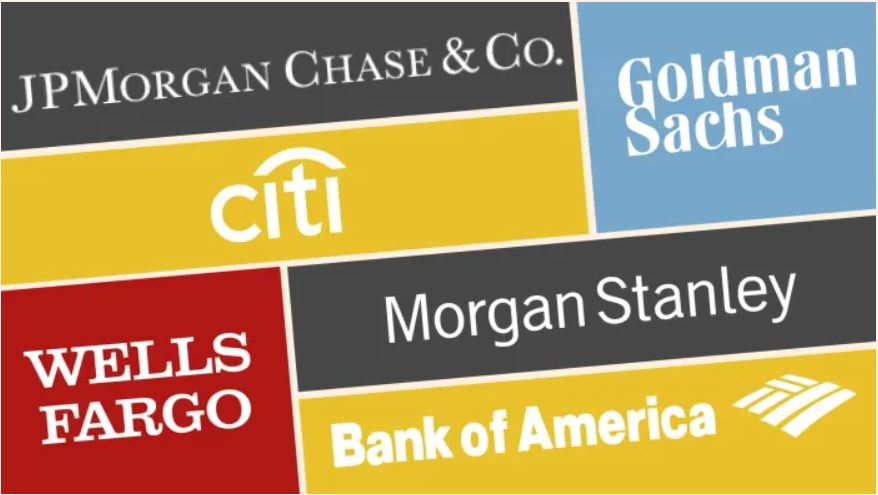The Federal Reserve raised interest rates by 75-basis points at its most recent meeting and forecasted that a similar rate hike could on the table in July. These efforts are necessary to stamp out the persistently high inflation throughout the economy.
The most recent 75-basis point rate hike was the largest since the 1994 rate tightening cycle.
The financial cohort will benefit via a confluence of a rising interest rates, financially strong balance sheets and the easy passage of annual stress tests to support expanded buybacks and increased dividends.
Bank of America (BAC), JPMorgan Chase (JPM), Morgan Stanley (MS), Citigroup (C) and Goldman Sachs (GS) look appealing at these levels, off substantially from their 52-week highs.
Net Interest Income
Net interest income is an important financial measure that is essentially the difference between interest paid and interest received thus the revenue generated by its loans and interest paid out on its deposit base.
Bank stocks perform well in a rising interest rate environment as the interest income earned from loans rises faster than what they pay for funding. The higher interest rates go, the greater the net interest income banks earn.
Immaterial Geopolitical Exposure
The big banking cohort has minimal to no direct exposure to Russia/Ukraine thus not tied directly to the geopolitical conflict. This is especially important as the geopolitical tensions rage on and possibly snap up these stocks as a function of overall market sentiment.
Overall, the big banks generate an inconsequential amount of revenue from Russia. For example, BAC, JPM and MS do not have direct exposure to Russia in their regulatory filings.
However, GS is estimated to have $940 million total exposure to Russia and Ukraine, or less than 0.1% of its total assets, per Bank of America. Citigroup (C) had $9.8 billion exposure to Russia, including $5.4 billion in Russia-specific exposure, equating to only 0.3% of the bank’s total assets.
As such, there is not a single company within the collective big bank cohort has any more than 0.3% of its total assets exposed to the Russian/Ukraine conflict.
2022 Financial Stress Tests
The financial cohort easily cleared the Federal Reserve's annual stress test, removing any concern that there’s systemic financial risk in the economy, circa 2008.
The results of the Fed's annual stress test exercise showed the banks have enough capital to weather a severe economic downturn and paves the way for them to expand share buybacks and increase dividend payouts.
The 34 lenders with more than $100 billion in assets that the Fed oversees would suffer a combined $612 billion in losses under a hypothetical severe downturn, the central bank said. But that would still leave them with roughly twice the amount of capital required under its rules.
The Fed assesses how banks' balance sheets would fare against a hypothetical severe economic downturn. The results dictate how much capital banks need to be healthy and how much they can return to shareholders via share buybacks and dividends. This stress test gives investors comfort that the big banks are well-prepared for a potential U.S. recession.
The 2022 stress tests are especially important as the world faces a geopolitical crisis that may reverberate through the global economy. All this considered, it’s refreshing to know that these stress tests were easily passed and indicate that the biggest U.S. banks could easily withstand a severe recession.
Conclusion
The geopolitical backdrop, rising inflation, China Covid lockdowns and rising interest rates will continue to weigh on investor sentiment.
The financial cohort is much more resilient and capitalized and have demonstrated their ability to evolve in the face of the pandemic and will weather these economic challenges as well. The 2022 stress tests were easily passed and indicate that the biggest U.S. banks could easily withstand a severe recession or geopolitical crisis.
This cohort presents compelling value, especially with substantially reduced valuations in a rising interest rate environment into 2023, which may serve as a long-term tailwind for banks to appreciate higher.
Just recently, MS and BAC boosted dividend by 11% and 5%, respectively. MS also authorized a new $20 billion share repurchase program. The positive results of these annual stress tests will likely allow expanded capital returns over the years to come in a fiscally responsible and accountable manner.
Noah Kiedrowski
INO.com Contributor
Disclosure: Stock Options Dad LLC is a Registered Investment Adviser (RIA) firm specializing in options-based services and education. There are no business relationships with any companies mentioned in this article. This article reflects the opinions of the RIA. Any recommendation contained in this article is subject to change at any time. No recommendation is intended to constitute an entire portfolio. The author encourages all investors to conduct their own research and due diligence prior to investing or taking any actions in options trading. Please feel free to comment and provide feedback; the author values all responses. The author is the founder and Managing Member of Stock Options Dad LLC – A Registered Investment Adviser (RIA) firm www.stockoptionsdad.com defining risk, leveraging a minimal amount of capital and maximizing return on investment. For more engaging, short-duration options-based content, visit Stock Options Dad LLC’s YouTube channel. Please direct all inquires to [email protected]. The author holds shares of AAPL, ADBE, AMD, AMZN, ARKK, AXP, BA, BBY, C, CMG, COST, CRM, DIA, DIS, EW, FB, FDX, FXI, GOOGL, GS, HD, HON, INTC, IWM, JPM, MRK, MS, MSFT, NKE, NVDA, PYPL, QQQ, SPY, SQ, TMO, UNH, USO, V and WMT.

